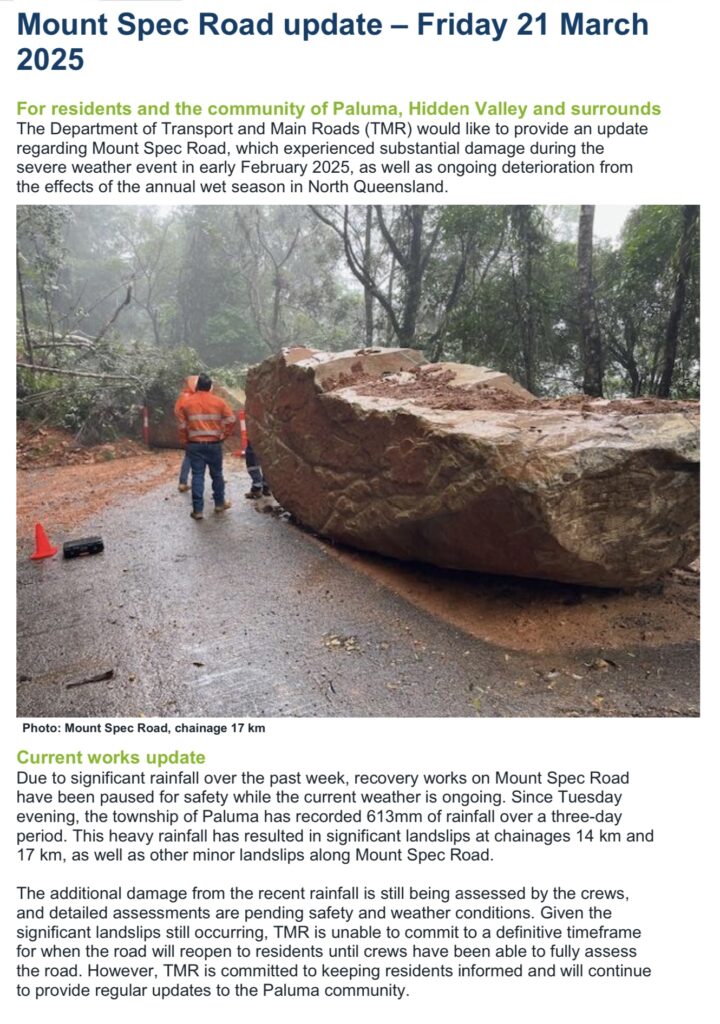
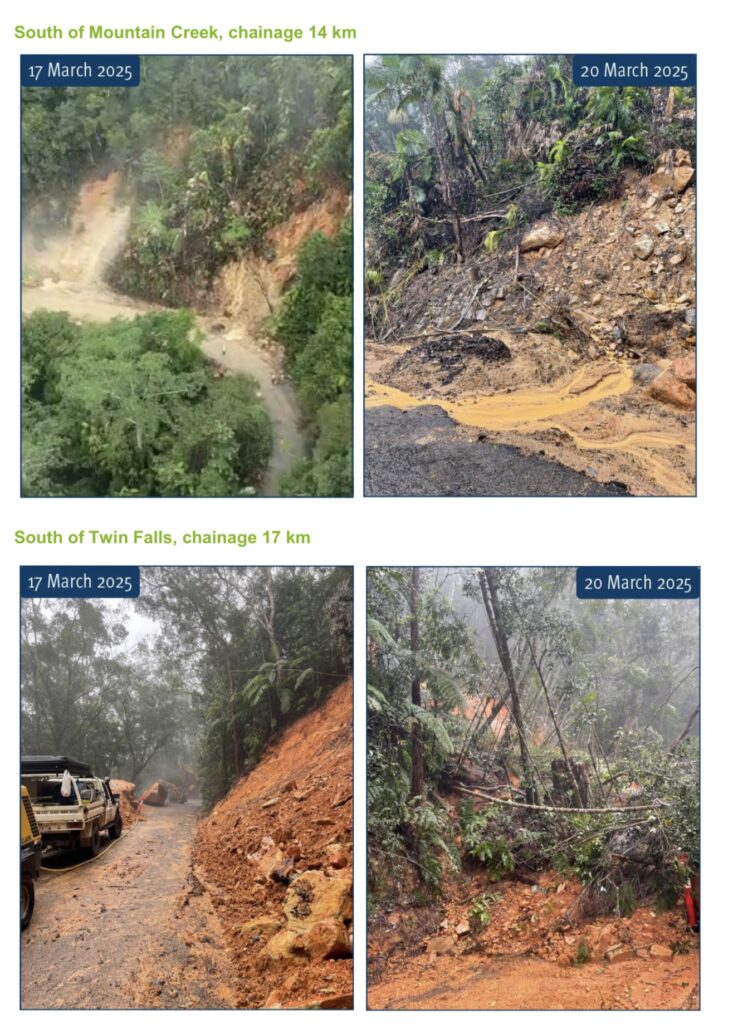
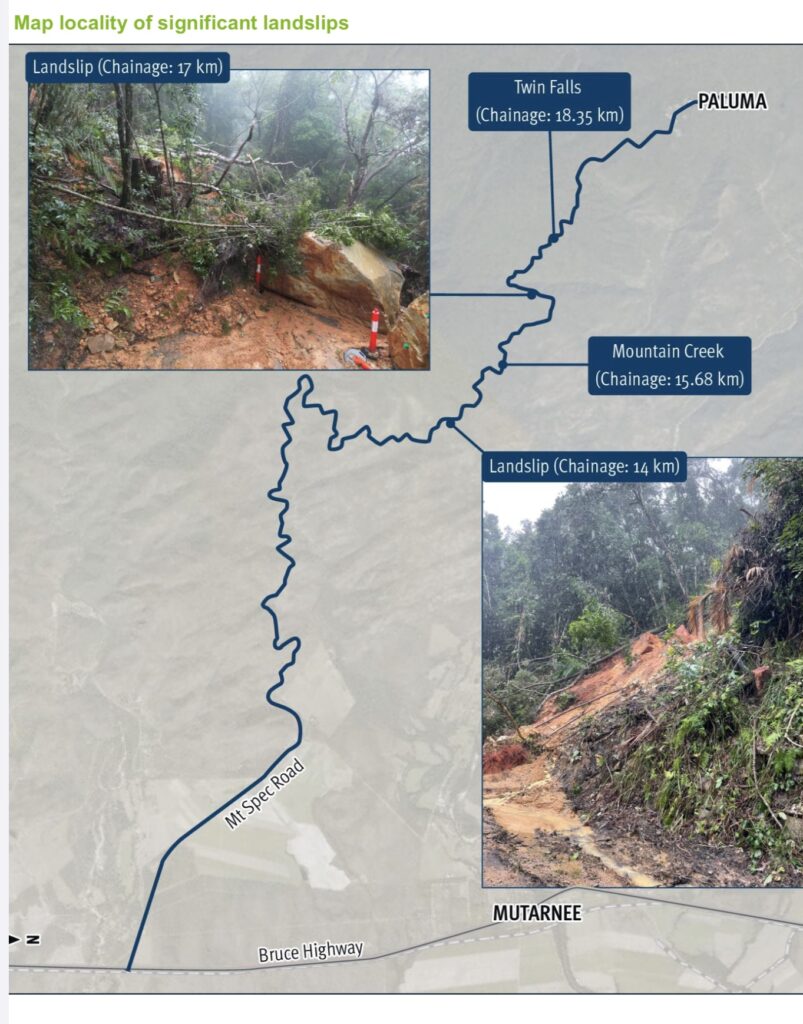





As a result of the recent additional rains, and the closure of the Star River Bridge on the inland access route, the upcoming Community Meeting, PDCA Meeting and PDCA BBQ have all been postponed until the following weekend – March 29th. The times and places are the same:
Paluma Community Hall March 29th
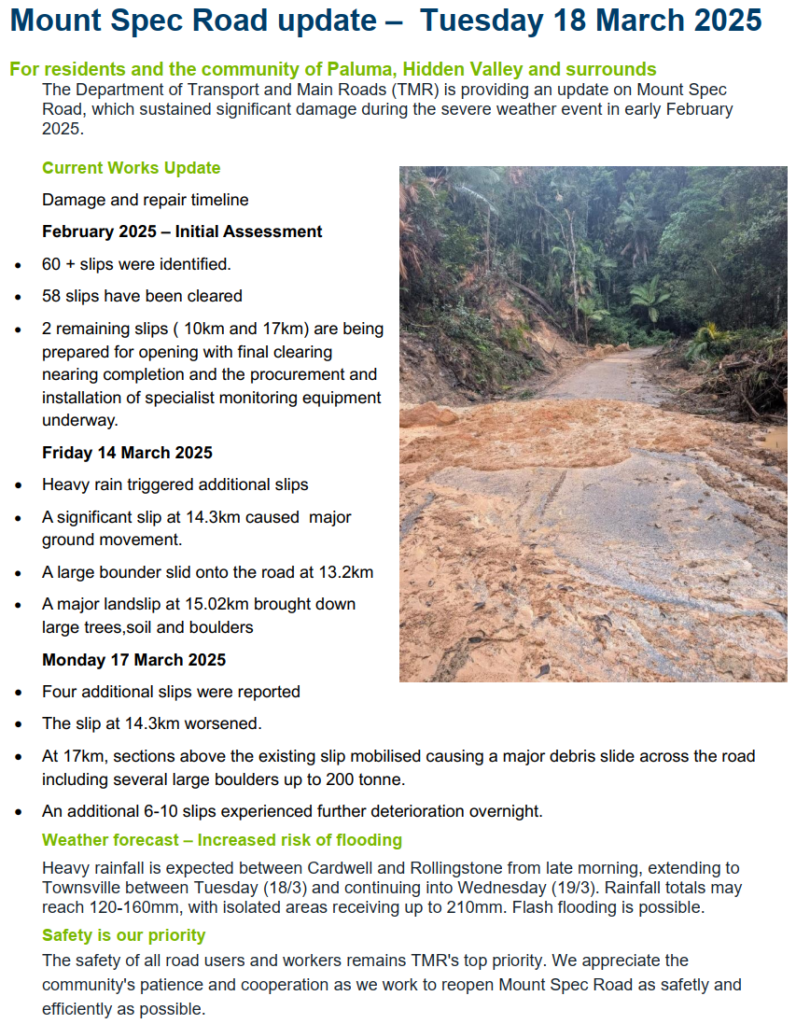
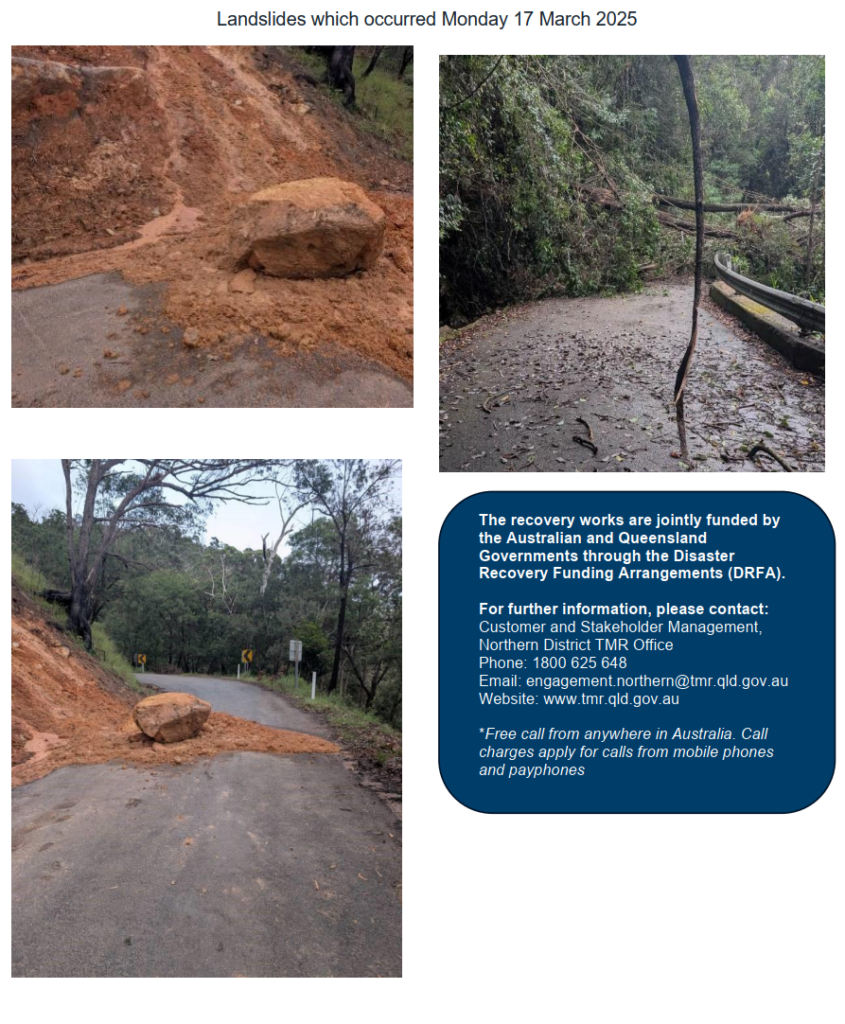
In addition to the Community Meeting to review experiences and lessons learned from the recent rains (Saturday at 1pm) the PDCA will be hosting a BBQ lunch at the Community Hall at 12 pm before the meeting.
There will also be a regular meeting of the PDCA Council at 3pm, after the community meeting. This PDCA meeting will cover various ongoing items (see agenda below). While these meetings have traditionally been considered as business meetings attended only by the elected members of the Council/Executive, we welcome any residents to attend and to raise any items that they would like the PDCA to consider in addition to what is already on the agenda. Here is the proposed agenda.
AGENDA
Unit Support Officer – Paluma Environmental Education Centre
Education (Organisation site)
North Queensland Region, School and Regional Operations and Performance Division
Paluma Environmental Education Centre is seeking a Unit Support Officer for a temporary, flexible full-time position commencing 12 May 2025.
If you are a motivated team player, interested in actively supporting teaching and learning whilst also contributing to the maintenance of grounds and facilities and a range of administrative support tasks within the centre, we encourage you to apply for this position.
Closing date: 30-Mar-2025
If interested contact:
Chris Schell
A/Business Manager PEEC
Paluma: 47708528
Vincent: 47729555
Challenge yourSelf; Learn to live with Others; Explore Special Places.
A community meeting to review our experiences during & after the February extreme weather event will be held on Saturday the 22nd of March commencing at 1 pm in the Paluma Community Hall. The objective is to record lessons learnt for the future, discuss known problems & see what we can do to improve how we manage such events. All members of the community are encouraged to attend.
Charlie Allen




The Townsville City Council has delivered NATRAShield mould cleaner as promised. It appears to be a plant based product without the nasty chemicals present in earlier cleaners. This Saturday Peter Cooke and Lynda Radbone will be at the SES from 9am – 12pm, and this Sunday (9th) I’ll be at the Emergency Services depot between 9am & 12am to hand it out to anyone who is interested. Bring a 2L bottle. After that contact Peter Cook for any extra.

For Blackfriars contact Rhett or Kristy Harrison. For Hidden Valley see Tracy Armstrong.
Charlie Allen
Mt Spec SES
